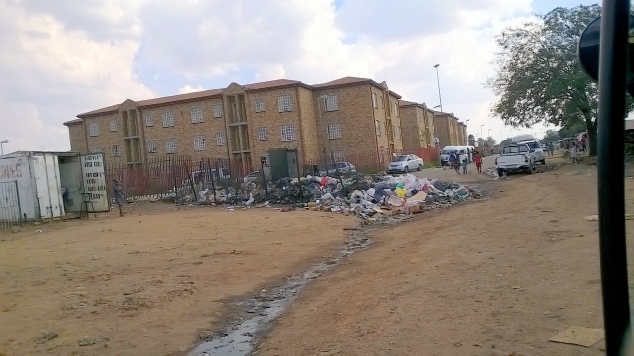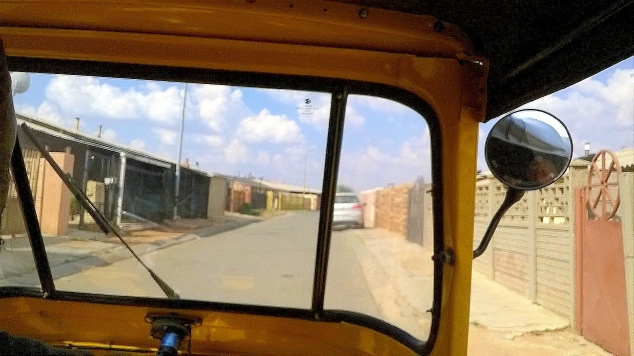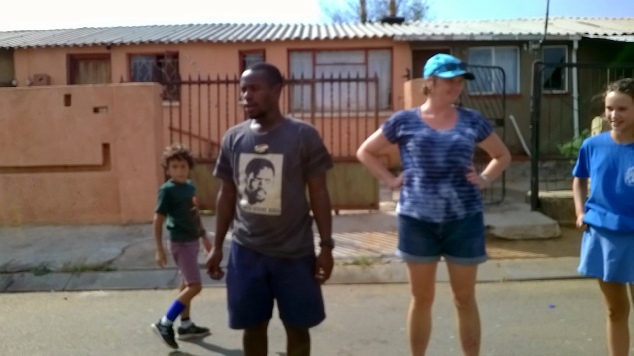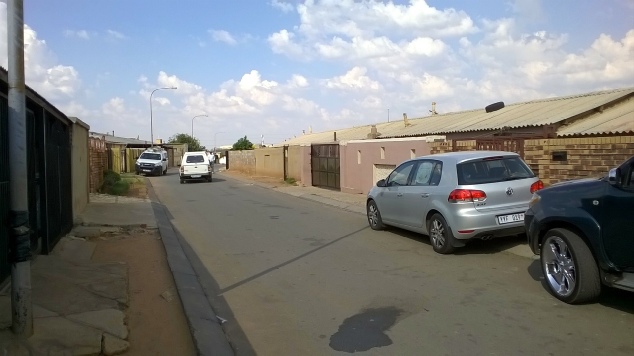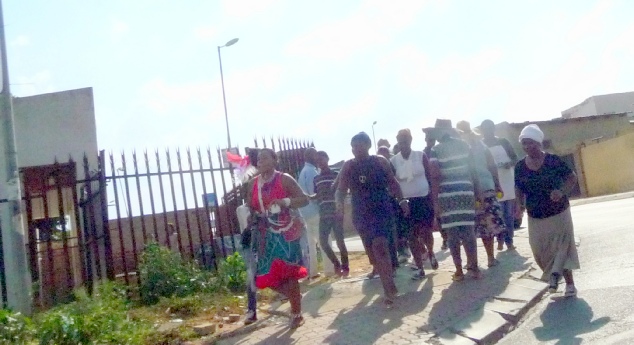
My journal. Africa Trip, March 9 – April 6, 2016

Because of the garbage-
I wonder about that because this housing development was not lived in:

Lungia was especially disturbed by this disuse. He said that the development had been built by the government for the township, but that when they opened it to residency, they wanted too much money for the apartments and no one or not enough people would rent. The people wanted a lower rent and the government would not do that because it would cost them, the government, too much. As a result of this stalemate, these many apartment buildings stand empty, protected against occupancy by guards, and no one benefits.
Except the neighborhood kids who get a ride from Phili while Lungia talks to us.
We go on to a better neighborhood where the roads are paved:
Just to the right of this picture, this was going on:
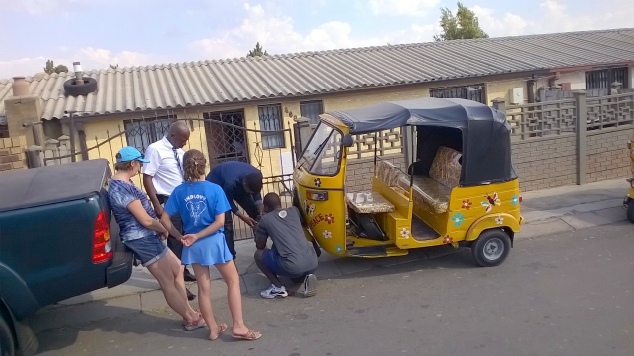
The tall gentleman in the white shirt owns the truck Margaret is leaning on, whose front end appears in the picture before this. He had backed his truck up towards the tuck tuck and dislodged by about a centimeter the headlamp in the middle of the tuck-
We go on to a better part of Soweta to visit Nelson Mandela’s home and see Desmond Tutu’s house as well. (But he prefers to stay in Cape Town, we were told.) Along the way we saw this day care center. The guides told us they were a good thing, offering three meals a day to the children, but expensive for most township people:

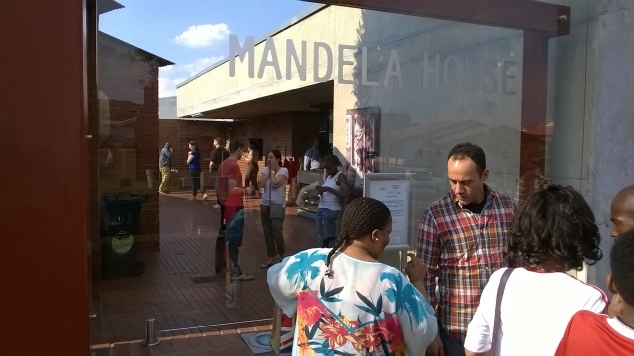
More interesting for us (not having time to visit the Mandela memorial and house) was the memorial to Hector Peterson close by:
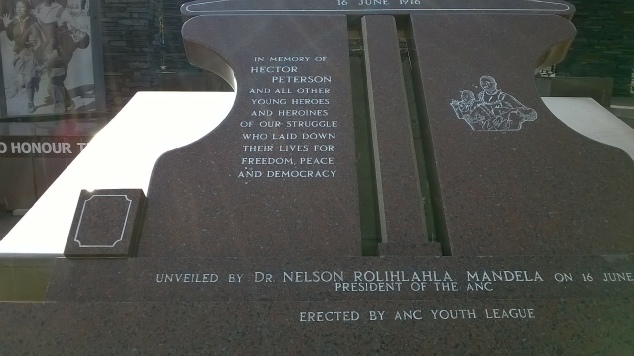
The plaque reads, “In memory of HECTOR PETERSON and all other young heroes and heroines of our struggle who laid down their lives for freedom, peace and democracy.” Our guide told us Hector’s story with considerable intensity and feeling. I found it quite moving and, of course, had known nothing of it or its importance to the eventual success of the anti-
of Hector Peterson being carried by fellow student Mbuyisa Makhubo while Hector’s sister Antoinette Sithole runs at his side became a powerful symbol and rallying icon for the resistance that the black people of Africa mounted in the days following the June 16, 1976 uprising. It was taken by Sam Nzima of The World, a Johannesburg paper, and reminds me of that equally iconic photograph of 9-
The photo has an important place in the memorial. People pose in front of it:

As we were returning to our HostelWorld starting place, Lungili pointed out a local shaman coming around a corner with a pack of followers in tow. He said she had just completed initiation and was tasked, as a final test, with finding a hidden object.
Called a sangoma by both Lungili and Vaida. There is a well-
Mutwa was revered for his predictions of world events, including the destruction of New York’s World Trade Centre in 2001, the 1976 June 16 uprising, HIV, Chris Hani’s assassination, load shedding and the ousting of President Thabo Mbeki.
It appears that these townships, Soweto is just the best-
| Namibia Day by Day |
| The Lion Park |
| Tour of Soweto |
| Setting up camp atHalali |
| Eric pix of Mowani camp area |
| Panorama with Bob somewhere |
| Tour of Soweta 2 |
| Tour of Soweto 3 |
| Tour of Soweta 2 |
| Tour of Soweto 3 |
